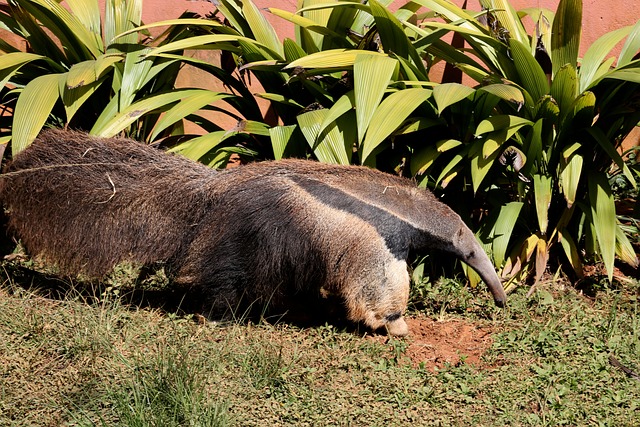Termites thrive in hidden, well-organized communities, causing significant structural damage before detection. Traditional methods like chemical treatments are being replaced by eco-friendly termite solutions that prioritize safety and sustainability. Advanced technologies such as termite dogs, remote sensing tools, and expert visual assessments detect colonies while natural repellents, physical barriers, and proper drainage prevent infestations. Regular professional inspections enable early detection, eliminating the need for harmful chemicals and ensuring a safe, green environment.
“Uncover the silent invaders: Termites and their hidden colonies. These relentless insects can cause significant structural damage, making expert inspections crucial for peace of mind. Learn how to navigate the world of termite infestations with our comprehensive guide.
From understanding colony behavior to comparing traditional and eco-friendly inspection methods, we’ll equip you with knowledge. Discover visual clues of damage and explore sustainable solutions. Uncover the best practices for prevention and control, embracing eco-friendly termite solutions for a safer home.”
Understanding Termite Colonies: Behavior and Signs of Infestation
Termite colonies are complex social structures that can go unnoticed for years, making them a subtle yet significant threat to homes and properties. These insects live in organized communities, with each member playing a specific role, much like an eco-friendly termite solution. The colony consists of reproductives (kings and queens), workers, soldiers, and nymphs. Understanding their behavior is key to identifying an infestation early on.
Signs of a termite colony include visible damage to wood structures, such as hollowed-out areas or weakened beams. Termites are attracted to moisture, so they often nest in damp or decaying wood. You might also notice small piles of sawdust, which are actually shed from the termites during their feeding process. Regular inspections by professionals can help detect these subtle signs and provide an effective, eco-friendly termite solutions to mitigate any potential damage.
Traditional vs Eco-Friendly Termite Inspection Methods
In the realm of termite inspections, traditional methods have long dominated the industry, often involving invasive techniques with potential environmental impacts. These conventional approaches include chemical treatments and physical probing, which, while effective, can leave behind hazardous residues and disturb the ecosystem. As a result, there’s a growing preference for eco-friendly termite solutions that prioritize safety and sustainability.
Eco-friendly termite inspection methods leverage advanced technology and natural indicators to identify colonies without causing harm. Termite dogs, for instance, are trained to detect the unique pheromones left by termites, offering a non-invasive and highly accurate alternative. Similarly, remote sensing technologies like infrared cameras and ground-penetrating radar can reveal hidden damage and termite activity without disturbing the structure or surrounding environment. These modern approaches not only minimize ecological disruption but also provide a more comprehensive view of potential termite infestations.
Identifying Damage: Visual Clues and Expert Assessment
Identifying damage caused by termites is a critical step in effective pest control. While some signs, like mud tubes and wood shavings, are clear indicators, many termite infestations show subtle visual clues that require expert assessment. Termites often leave behind faint lines or patterns on wooden surfaces, which can be nearly imperceptible to the untrained eye. These subtle changes in wood texture might suggest a silent invasion.
Eco-friendly termite solutions emphasize the importance of professional inspections due to these challenges. Experts utilize advanced tools and extensive knowledge to detect even hidden colonies. Through meticulous visual examinations and specialized equipment, they can pinpoint areas of damage and determine the extent of the infestation, ensuring that any treatment is tailored to the specific needs of the property.
Effective Eco-Friendly Termite Control and Prevention Strategies
In today’s world, where environmental consciousness is paramount, it’s crucial to adopt eco-friendly termite control and prevention strategies. Traditional methods often rely on toxic chemicals that can harm both the environment and non-target organisms. Instead, professionals now offer a range of green solutions to effectively manage and eliminate termite infestations. One such approach involves the use of natural repellents like essential oils, which have been proven to deter termites due to their strong scents. These plant-based compounds not only reduce the need for harsh chemicals but also pose minimal risk to pets and beneficial insects.
Another eco-friendly strategy is the implementation of physical barriers and modifications to the structure. This includes sealing entry points, ensuring proper drainage around the building, and using termite-resistant materials during construction or repairs. Regular inspections by trained professionals can also help in early detection of termites, allowing for prompt action without resorting to toxic treatments. By combining these eco-friendly termite solutions, homeowners can protect their properties while maintaining a safe and sustainable environment.
When it comes to safeguarding your property from termite infestations, a proactive approach is key. By understanding termite behavior, utilizing advanced inspection techniques like expert assessments, and adopting eco-friendly control strategies, you can effectively mitigate these pests. Embracing natural methods, such as organic deterrents and targeted treatments, not only protects your home but also contributes to a healthier environment. Remember, early detection through regular inspections is vital, allowing for swift action and the implementation of sustainable termite solutions.
